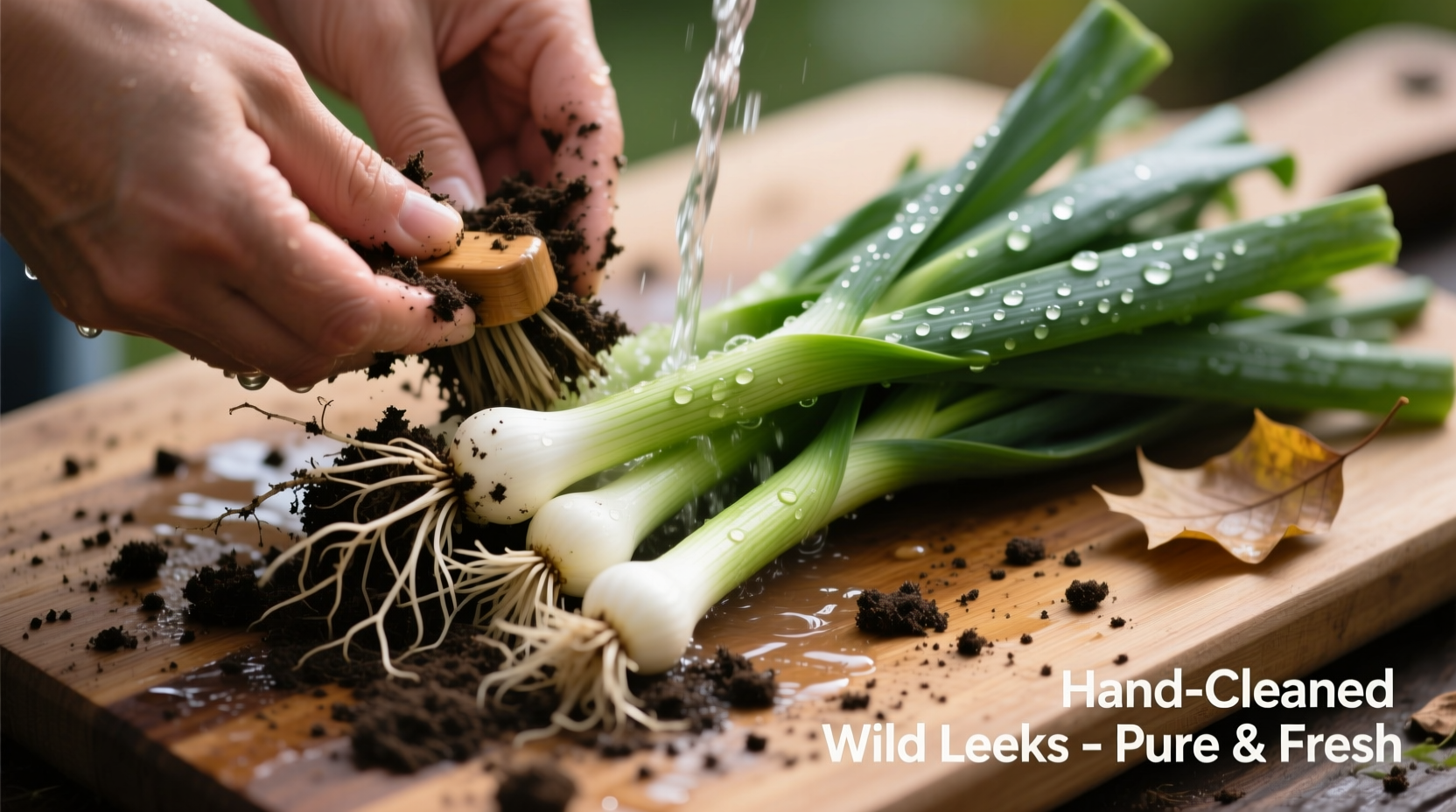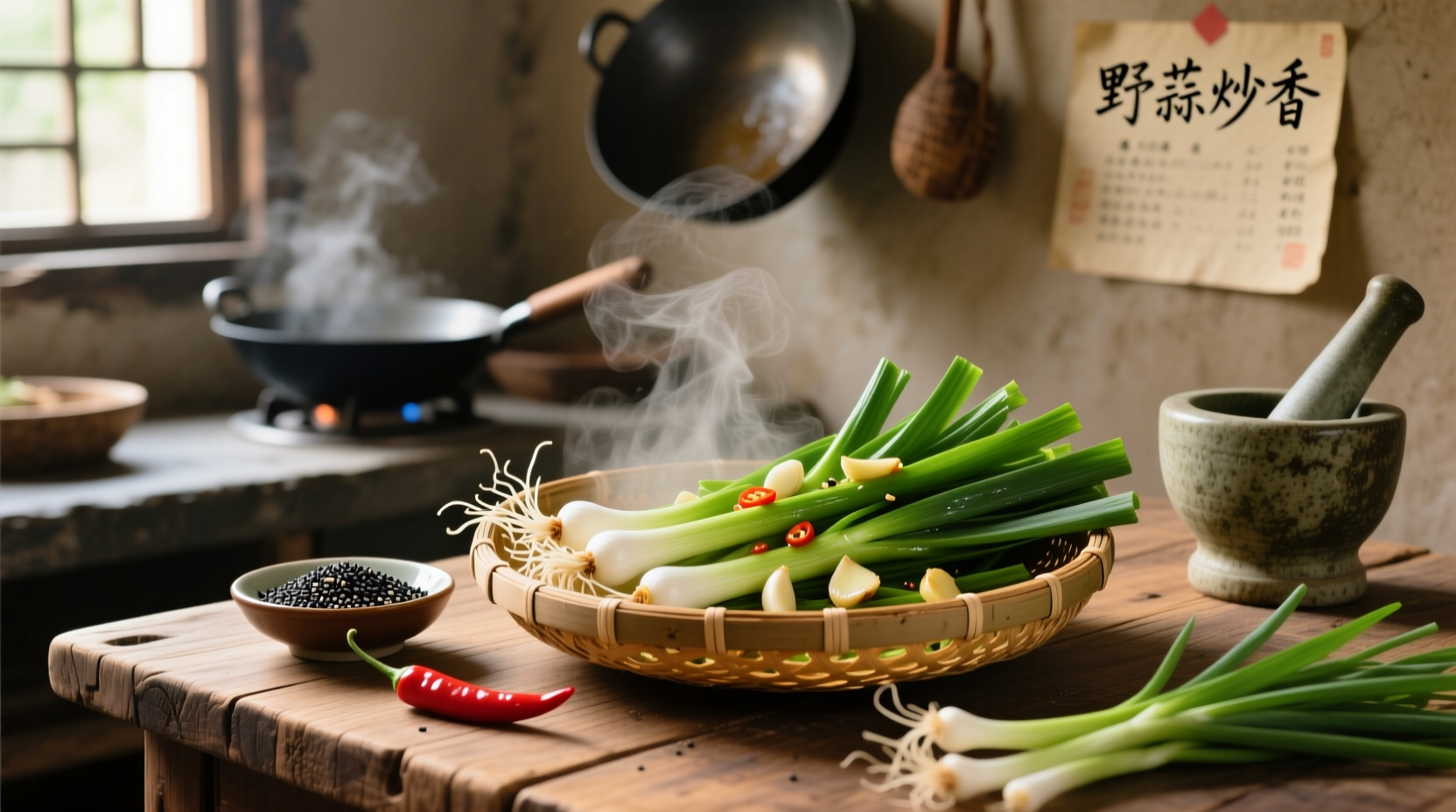Discover 4 authentic wild leek recipes with essential safety guidelines, seasonal timing, and preparation techniques that transform this spring foraged treasure into restaurant-quality dishes at home. Learn how to safely identify true wild leeks (Allium tricoccum), avoid toxic look-alikes, and maximize their delicate garlic-onion flavor in soups, tarts, pesto, and preserved forms.
Wild leeks, also known as ramps in North America, are the heralds of spring for foragers and chefs alike. These delicate alliums emerge in early spring with their distinctive garlic-onion aroma that transforms simple dishes into seasonal celebrations. As a French-trained chef who's documented wild leek traditions from the Pyrenees to the Appalachian Mountains, I've seen how properly prepared wild leeks can elevate your cooking while connecting you to centuries of culinary heritage.
Why Wild Leeks Deserve Your Attention This Spring
Unlike their cultivated cousins, wild leeks offer a complex flavor profile that combines the best of garlic and onion with subtle earthy notes. Their seasonal availability creates culinary urgency—these treasures disappear as quickly as they arrive. The key to enjoying wild leeks lies not just in the recipes, but in understanding their proper identification, ethical harvesting, and optimal preparation techniques.
Safety First: Identifying True Wild Leeks
Mistaking toxic look-alikes for wild leeks can have serious consequences. The most dangerous confusion occurs with lily of the valley and autumn crocus, both containing cardiac glycosides that can cause severe health issues. Always verify these three critical identification markers before harvesting:
| True Wild Leek (Allium tricoccum) | Lily of the Valley (Toxic) | Autumn Crocus (Toxic) |
|---|---|---|
| Distinct garlic/onion smell when crushed | No garlic scent, sweet floral fragrance | No garlic scent, slightly medicinal smell |
| Smooth, broad leaves with parallel veins | Bell-shaped flowers, ribbed leaves | Narrower leaves, different growth pattern |
| Develops small white flower cluster | White bell-shaped flowers | Purple crocus-like flowers (later season) |
The USDA Plants Database confirms wild leeks grow in moist deciduous forests across eastern North America and Europe, typically appearing between March and May depending on latitude and elevation. When in doubt, consult local foraging experts or use the iNaturalist app for verification before consumption.
Harvesting Ethics and Seasonal Timing
Wild leek populations have declined significantly due to overharvesting. Sustainable foraging practices are essential:
- Never harvest more than 1-5% of a patch
- Take only one leaf per plant, leaving the bulb to regenerate
- Avoid harvesting in protected areas or national parks
- Harvest only when plants have 3-4 mature leaves
The University of Vermont's Extension Service recommends waiting at least five years before revisiting the same patch to allow full recovery. This conservation approach ensures future generations can enjoy these seasonal treasures.
Preparing Wild Leeks for Cooking
Proper preparation maximizes flavor while minimizing waste:
- Cleaning: Soak in cold water to remove forest debris, changing water 2-3 times
- Trimming: Separate white bulbs from green leaves (both edible but cook differently)
- Drying: Pat dry thoroughly before storage or cooking
- Storage: Wrap in damp paper towels and store in glass container for up to 5 days
Unlike cultivated leeks, wild varieties require minimal trimming—simply remove any wilted or damaged leaves. Their entire plant is edible, though the white bulbs offer stronger flavor while the green leaves provide delicate onion notes.

4 Authentic Wild Leek Recipes for Every Skill Level
1. Simple Wild Leek Pesto (Beginner)
This spring variation on traditional pesto showcases wild leeks' delicate flavor without overpowering them. The garlic notes in wild leeks mean you can reduce or eliminate additional garlic.
Ingredients:
- 1 cup cleaned wild leek greens (bulbs reserved for another recipe)
- 1/3 cup pine nuts (or walnuts for budget option)
- 1/2 cup grated Parmesan cheese
- 1/2 cup extra virgin olive oil
- Salt to taste
Method:
- Toast nuts in dry skillet over medium heat until fragrant
- Combine wild leek greens, nuts, and cheese in food processor
- Pulse while slowly adding olive oil until smooth
- Season with salt and store in jar with thin oil layer on top
Pro Tip: Freeze in ice cube trays for seasonal enjoyment year-round. This versatile pesto works beautifully as pasta sauce, sandwich spread, or pizza base.
2. Wild Leek and Potato Soup (Intermediate)
This French-inspired soup transforms wild leeks into a creamy, comforting dish that highlights their unique flavor without heavy cream.
Ingredients:
- 1 bunch wild leeks (both bulbs and greens)
- 2 medium potatoes, peeled and cubed
- 4 cups vegetable broth
- 1/4 cup crème fraîche
- 2 tbsp butter
- Fresh thyme and chives for garnish
Method:
- Sauté chopped wild leek bulbs in butter until translucent
- Add potatoes and broth, simmer until potatoes are tender
- Stir in chopped wild leek greens and cook 5 minutes more
- Blend until smooth, stir in crème fraîche
- Garnish with fresh herbs and serve immediately
This wild leek soup recipe demonstrates how European chefs traditionally use seasonal foraged ingredients to create elegant yet simple dishes. The University of Maine's Cooperative Extension notes that wild leeks contain significant amounts of vitamins A and C, making this soup both delicious and nutritious.
3. Wild Leek and Goat Cheese Tart (Advanced)
This elegant tart showcases wild leeks in a sophisticated preparation perfect for entertaining.
Ingredients:
- 1 sheet puff pastry, thawed
- 1 bunch wild leeks, thinly sliced
- 4 oz goat cheese
- 2 eggs
- 1/2 cup heavy cream
- Fresh dill for garnish
Method:
- Pre-bake puff pastry on parchment-lined baking sheet for 10 minutes
- Sauté wild leeks until softened but not browned
- Mix goat cheese, eggs, and cream; season with salt and pepper
- Spread wild leeks over pastry, pour cheese mixture on top
- Bake at 375°F for 25-30 minutes until set
This wild leek tart recipe exemplifies the French culinary tradition of highlighting seasonal ingredients with minimal interference. The delicate balance between the wild leeks' pungency and the goat cheese's tang creates a sophisticated flavor profile that impresses guests while remaining approachable for home cooks.
4. Pickled Wild Leeks (Preservation)
Extend your wild leek season with this simple preservation method.
Ingredients:
- 1 bunch wild leeks
- 1 cup apple cider vinegar
- 1 cup water
- 2 tbsp sugar
- 1 tbsp salt
- 1 tsp black peppercorns
- 1 dried chili (optional)
Method:
- Trim wild leeks to uniform length, leaving 1-inch green tops
- Bring vinegar, water, sugar, and salt to boil
- Pack leeks into sterilized jars with peppercorns and chili
- Pour hot liquid over leeks, seal jars
- Refrigerate for at least 2 weeks before using
These pickled wild leeks maintain their distinctive flavor while developing complex notes over time. They're perfect as cocktail garnishes, salad toppings, or charcuterie board additions.
When Wild Leeks Aren't Available: Smart Substitutions
Wild leeks have a short season and limited availability. When they're out of season, consider these substitutions based on what you're making:
- For pesto: 2 parts scallions + 1 part garlic chives
- For soups: Leeks + small amount of garlic
- For tarts: Shallots + chives
- For pickling: Small pearl onions + garlic scapes
Remember that cultivated leeks lack the distinctive garlic notes of wild varieties, so you'll need to adjust other ingredients accordingly. The key is balancing the onion and garlic elements that make wild leeks unique.
Seasonal Context: When and Where to Find Wild Leeks
Understanding the wild leek lifecycle helps maximize your foraging success:
- March-April: Emergence in southern regions (USDA zones 7-8)
- April-May: Peak season in mid-latitudes (USDA zones 5-6)
- May-June: Northern regions and higher elevations (USDA zones 3-4)
- Late May: Flowering begins, flavor becomes stronger
- June: Seeds develop, plants begin to die back
Look for wild leeks in moist, deciduous forests with rich soil, typically on north-facing slopes. They often grow in large colonies where conditions are favorable. The Cornell University Department of Natural Resources notes that wild leek populations thrive in areas with minimal soil disturbance and abundant leaf litter.
Important Context Boundaries for Wild Leek Use
While wild leeks are delicious, certain situations warrant caution:
- Medication interactions: Avoid if taking blood thinners due to vitamin K content
- Digestive sensitivity: Consume in moderation if prone to digestive issues
- Pregnancy: Consult your healthcare provider before consuming large quantities
- Allergies: Those allergic to onions or garlic should avoid wild leeks
The American Botanical Council recommends introducing wild leeks gradually to assess individual tolerance, as their potent compounds can affect some people differently than cultivated alliums.











 浙公网安备
33010002000092号
浙公网安备
33010002000092号 浙B2-20120091-4
浙B2-20120091-4